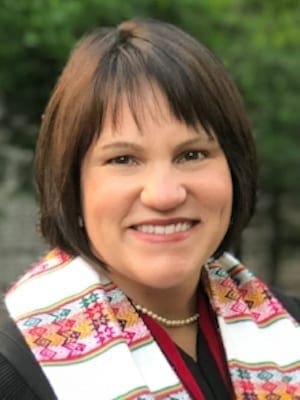I was a junior in college when I saw something I’d never seen before: a woman preacher.
Growing up Southern Baptist, it never even crossed my mind that a woman could preach or be a pastor.
And then I saw her.
It was at a state collegiate Baptist campus-ministry gathering. After the welcome, the songs and the prayers, she stood to speak, and the shekinah glory shone round about her.
Her name was Esther Burroughs. I was a fan.
Sometime later, my friend, Nancy, and I had the opportunity to drive Esther roughly 72 miles from my college town to the nearest airport.
Nancy and I were “fan-girling” all over sweet Esther, bombarding her with questions the entire trip.
“You’re a woman, and yet you preach?”
With a sly smile and perhaps a wink, Esther said, “Well, I speak …”
Nancy and I both ended up in seminary after our encounter with Esther.
To my knowledge, Esther has never pastored a church but has lived out her gifts and her calling in ways that work within her context.
And through her ministry, she inspired me and doubtless myriad other women into following God’s call into ministry.
It took some time for me to live fully into my pastoral calling, but a couple of denominations and several ministry roles later, I’m a lead pastor. And I love it. Most days, let’s be real.
With few role models for women preachers, I’ve had to chart my own course.
At one time, I tried to be like Barbara Brown Taylor, profound and poetic with carefully chosen prose that leaves listeners spellbound. It didn’t work. My efforts at poetic prose came off as pedantic, inauthentic and possibly hokey.
Then someone offered me a piece of advice. “Play to your strengths.”
My thought pattern went something like this, “I may not be poetic, but I know how to connect.”
I moved out from behind the pulpit and started preaching without notes.
“Don’t be showy,” the retired pastor in my congregation warned.
To him, “showy” was moving out from behind the pulpit and preaching without notes. I held his critique loosely, knowing that my strength in preaching is connecting with the people.
Pulpits hide my 5-foot-2 frame. Manuscripts keep me rigid, my eyes less engaged with the listeners. No pulpit and no notes left me freer to connect with the people and therefore better able to communicate the gospel.
As I’ve grown into my own preaching voice, I realize I’m stylistically more like Joyce Meyer, theologically like Barbara Brown Taylor, and I hope I have just a little of the warmth and humor of Esther Burroughs.
A strange mix, perhaps, but it feels like the “sweet spot” for me.
Finding my voice as a preacher has taken some time. That’s true for most preachers. We try different styles; we emulate different models along the way to finding our identity in – or near – the pulpit.
I give thanks for the Esthers, the Barbaras and the Joyces who found their unique voices with fewer models than I had.
I give thanks for the congregations who have given me room to practice my craft even as I experimented with styles ill-suited for me.
And I give thanks for the Jennifers and the Lisas – the next generation of women taking their places in – or near – America’s pulpits.
To all preachers still finding their voice, here’s the recipe the best I can tell: Know yourself, play to your strength and preach the good news. That will be enough.
Editor’s note: A version of this article first appeared on Pinnacle Leadership Associates’ blog. It is used with permission.
Rhonda Abbott Blevins is an associate with Pinnacle Leadership Associates and serves as pastor of Chapel by the Sea, an interdenominational congregation in Clearwater Beach, Florida. She has a master of divinity from Southwestern Seminary in Fort Worth, Texas and a doctor of ministry from Mercer University’s McAfee School of Theology in Atlanta, Georgia. She lives with her husband Terry and sons Jake and Rhys.


